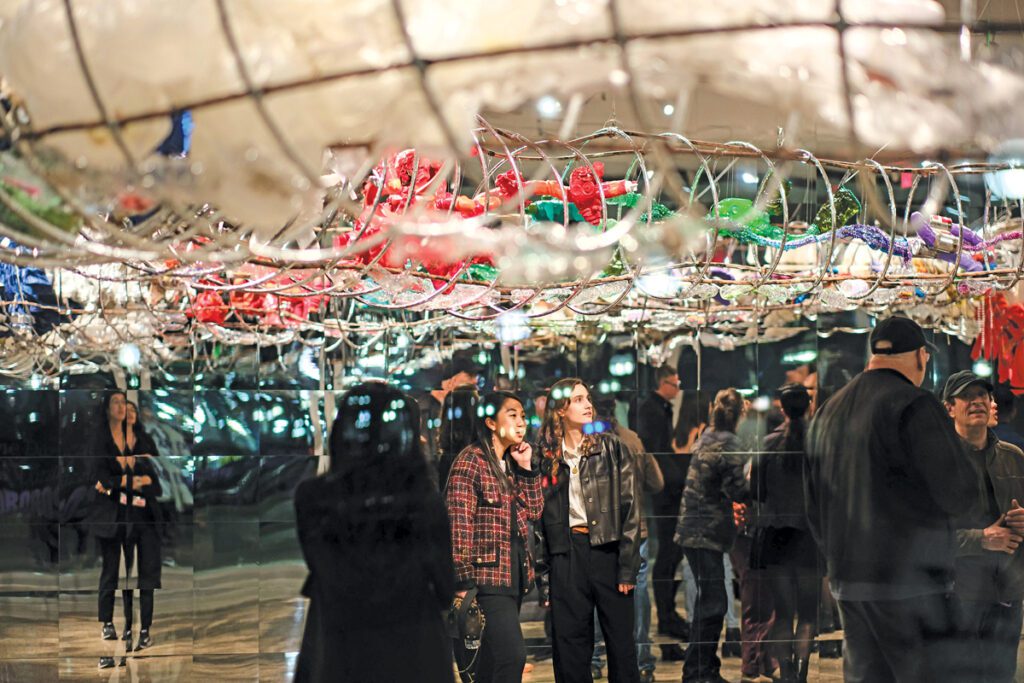
New York City–based stage designer, performance artist, and drag queen Machine Dazzle’s sculptural installation is on display in UMMA’s Stenn Gallery until August 25. | Photo courtesy of UMMA
The ancient Egyptian and Greek symbol of a snake eating its tail, Ouroboros, is also the inspiration for the three-part art installation by U-M Stamps Roman J. Witt artist-in-residence Machine Dazzle (né Matthew Flower). The resident artist works jointly with students and faculty to create a work of art: Ouroboros, a room-sized “snake” that hangs from the ceiling at UMMA’s Irving Stenn Jr. Family Gallery.
Dazzle gleaned trash from local bodies of water, trash bins, and streets, then reformed it into flowers, face-like detergent bottles, watermelons, digitally formed human genitals, and more that hang inside and spill outside the sculpture. He made the soundtrack by crushing, pouring, and tapping the found objects in water.
Fascinated by his Penny Stamps lecture at the Michigan Theater, I was eager to go to the opening. In the dusk outside the museum, the chandelier-like Ouroboros was already drawing a crowd. Once indoors, we all looked up, fascinated by the plethora of colors, shapes, and light.
Dazzle calls himself a “radical queer, emotionally driven, instinct-based concept artist and thinker trapped in the role of costume designer, sometimes”—the last because when he arrived in New York in 1994, his wearable art made such a splash that club kids and drag queens began commissioning outfits from him. More recently, he’s designed costumes for Met Gala attendees.
The Guggenheim Museum and the Rockefeller Brothers Fund commissioned his Covid-inspired Ghost Town in the Sky. His collaboration with actor, playwright, and performance artist Taylor Mac, the Pulitzer Prize–nominated performance piece Taylor Mac’s 24-Decade History of Popular Music, can be seen on Max (HBO), and costumes he created for it were displayed in his 2022 solo exhibition, Queer Maximalism x Machine Dazzle, at New York City’s Museum of Arts and Design.
At the opening, Dazzle said the message of Ouroboros is about “destroying the planet, understanding that the human race is one more of Mother Nature’s vicious cycles ravaging the earth. The destruction of dinosaurs, the Ice Age—[and now] the human race is a natural disaster. And so the Ouroboros symbolizes life and death and rebirth and eternity forever. And how we create garbage and become garbage every time we eat something. There are microplastics in all kinds of things. … If plastic water bottles float in the ocean long enough, life will start being formed around these shapes.”
Dazzle’s first act of his three-act installation followed his Penny W. Stamps lecture at the Michigan Theater on March 14, followed by a second act on May 1st where creations by U-M students on similar themes were incorporated within Ouroboros. The final act, coinciding with LGBTQ Pride Month, begins with a show on June 14, where performers will wear costumes made from the deconstruction of Ouroboros. The exhibit runs from March 14 through August 25.